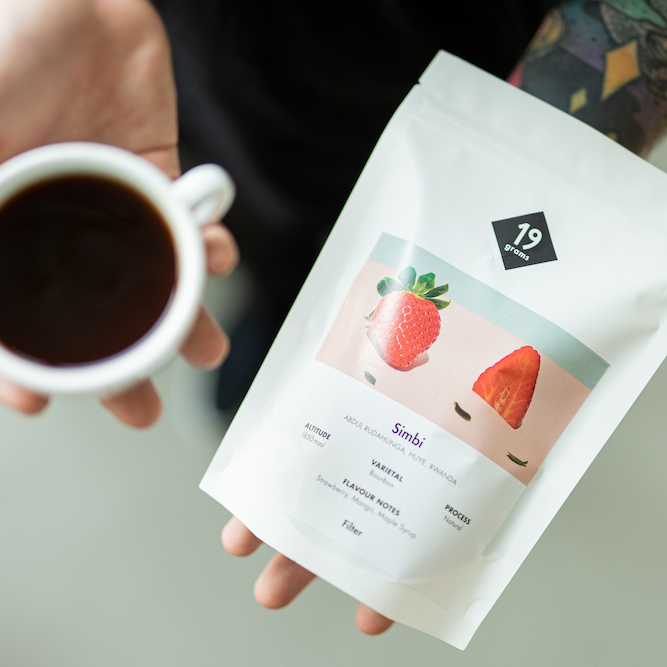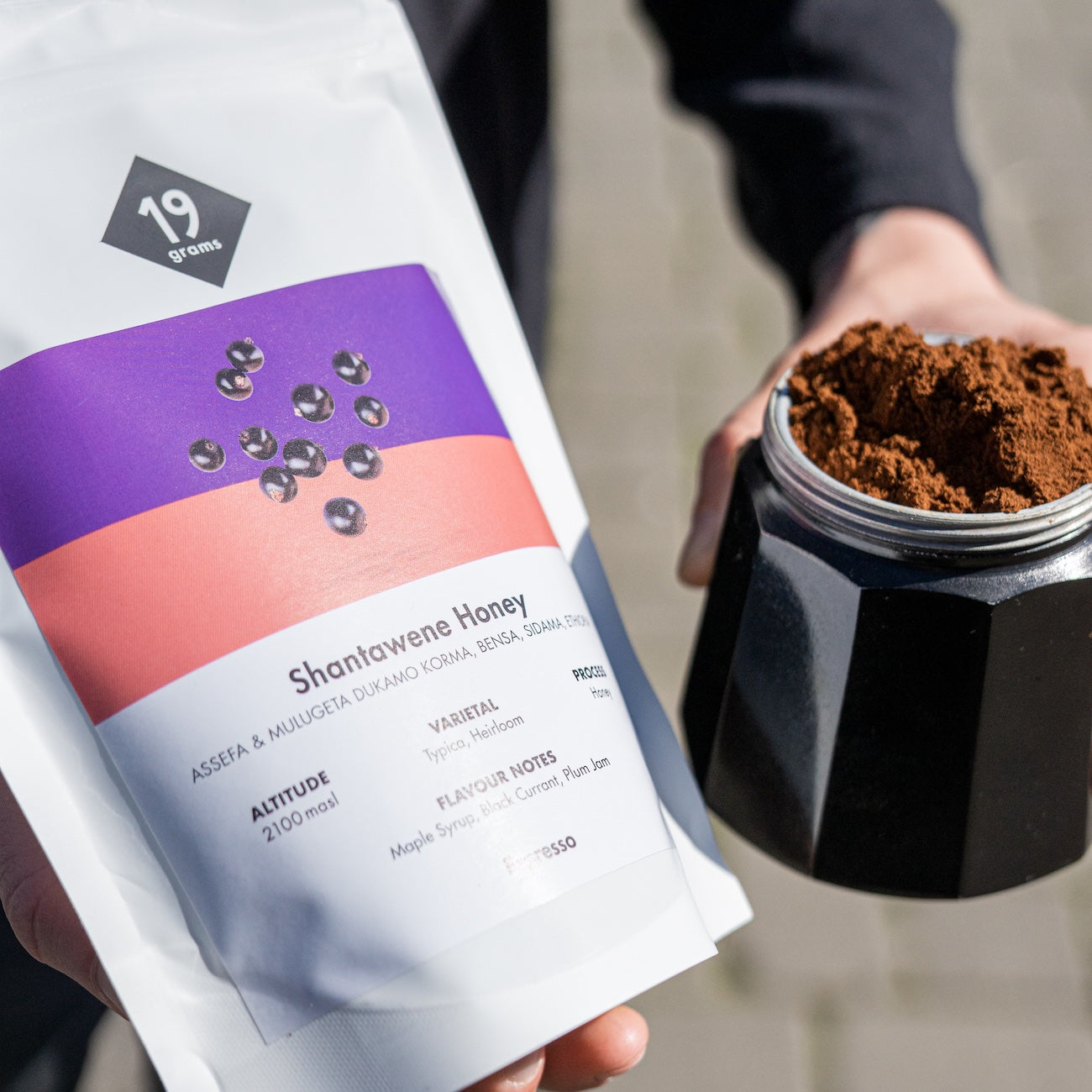Drum roasting is a traditional method of roasting coffee. In this process, small quantities of green coffee are heated from the outside in a rotating drum and then slowly cooled with air to enable particularly even and gentle heating. Unlike industrial roasting, which uses high temperatures in an extremely short time, drum roasting is done gently and without the formation of tannins. This results in a digestible and aromatic coffee.
In drum roasting, green coffee beans are placed in a rotating drum that constantly mixes the beans and keeps them moving. The drum is heated from below with a heat source such as a gas burner. The heat is transferred by the direct contact of the coffee beans with the hot drum wall.
The exact duration of the roasting process depends on the desired degree of roast of the coffee beans. As a rule, a drum roast lasts between 8 and 25 minutes, whereby the temperature curve during this time significantly influences the final result. Temperatures are usually between 180 and 240 °C. Once the desired degree of roasting is reached, the coffee beans must be cooled quickly to prevent further roasting.
During the drum roasting process, the coffee beans change colour from a light yellow to a light brown in the first few minutes and initially look a little wrinkly. After that, they gradually become smoother and darker. In addition, the beans become larger due to the escaping roasting gases. The evaporation of the water in the beans finally results in an audible crack, the so-called "first crack". With some roasts, the drum roast is already finished after this point, while with darker roasts the beans remain in the drum for a while. The longer the coffee beans are roasted, the more acids are broken down and the more intense the roasted aromas of the coffee become.






